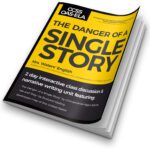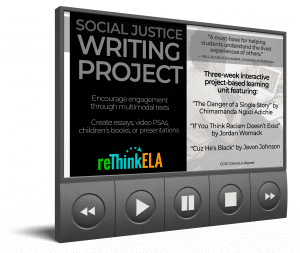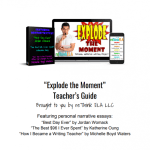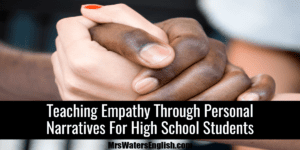As our schools continue to re-segregate and tensions among various groups in our society continues to rise, we must work as teachers to help our students see the humanity in those who are different than them. Even more important than teaching students how to make inferences or summarize a text is teaching them empathy, the ability to understand people who are not like them and to share the feelings of other people.
Back in July 2016, then-President Barack Obama said at a funeral for police officers:
We wonder if an African-American community that feels unfairly targeted by police, and police departments that feel unfairly maligned for doing their jobs, can ever understand each other’s experience.”
As a lifelong reader, writer, and now an English teacher, I know that being able to step into another person’s shoes, whether through reading their story, or hearing them tell it, enables me to experience what they are going through, to empathize with them. This is what I want my students to be able to do, and so I’ve developed a free lesson featuring a popular TED Talk, a unit featuring several multimedia resources (including an essay written by a former student), and written a book to help.
 The Danger of a Single Story by Chimamanda Ngozi Adichie | Free Lesson Plan
The Danger of a Single Story by Chimamanda Ngozi Adichie | Free Lesson Plan
Adichie’s story not only highlights how we stereotype each other, but also how reducing people to just one story or aspect of their being is dangerous because it reduces their humanity — and ours. This lesson starts with a reflective quickwrite, followed by students watching and discussing the TED Talk. Afterwards, students complete a personal narrative assignment that encourages them to share their stories.
Well done and TY>>@watersenglish How To Teach Adichie’s “The Danger Of A Single Story” For High School Students – https://t.co/LrGkLXHUzS .
— Monica Silva (@MrsSilvaUMS) October 5, 2017
Opening a dialogue about #difference or #dominanthistory or a way into #teaching #personalnarratives, starting with @AdichieSpeaks https://t.co/hLIJ6fZjP4
— Shelli Homer (@sehomer13) October 3, 2017
 Social Justice Writing Project | 3+ Week Unit
Social Justice Writing Project | 3+ Week Unit
Not only do students need to hear each others stories, they need to be encouraged to share their own stories. This unit features stories by Javon Johnson, Adichie, and Oklahoma author Jordan Womack in several modes to engage students. After discussing these and other stories, students are encouraged to share their own stories with authentic audiences or create/evaluate social justice solutions through their own essays, video PSAs, presentations or children’s books.
 Explode the Moment Personal Narrative Writing Project
Explode the Moment Personal Narrative Writing Project
By sharing their own stories and hearing others’ stories, students develop their empathy skills. The problem? Many students don’t know that they have a story or that they are capable of — and should — share it. Explode the Moment Personal Narrative Writing Project provides a rationale and blueprint for helping student writers find their voices.

